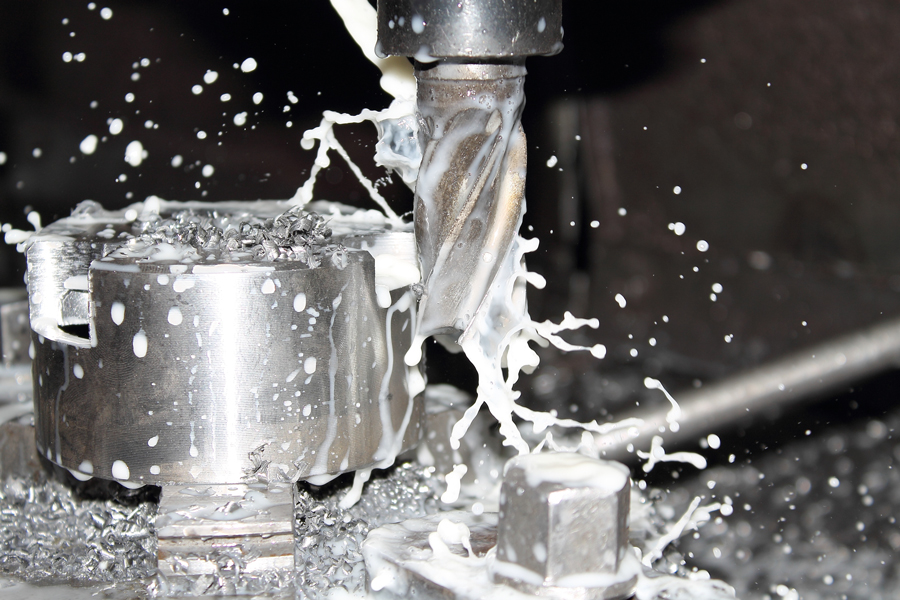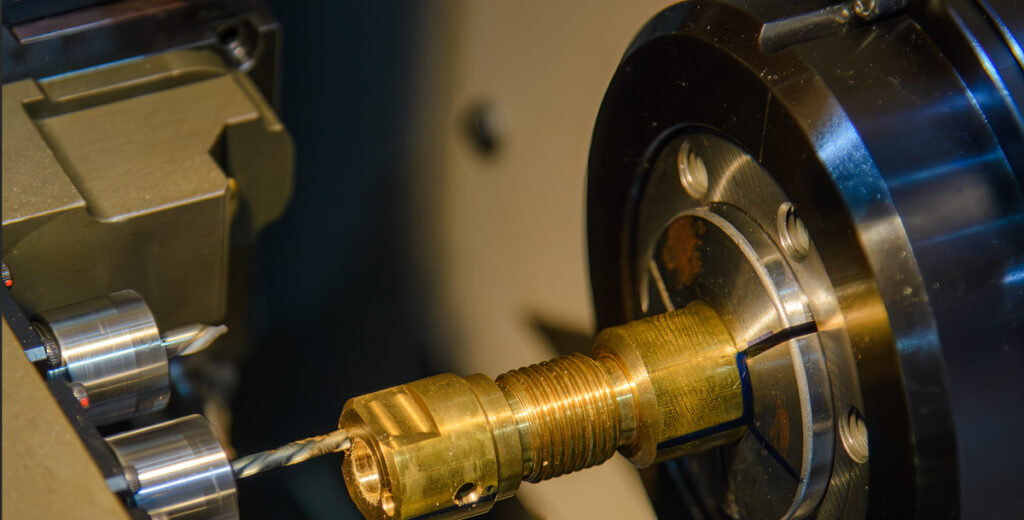10 Expert Techniques for Machining 304 Stainless Steel with Precision and Speed
Introduction
So, you’re encountering challenges while machining 304 stainless steel and are looking for effective tips to enhance your process? You’re not alone—304 stainless steel, known for its excellent corrosion resistance and versatility, can be difficult to machine due to its toughness and work-hardening properties. Whether you’re facing issues with tool wear, heat buildup, or achieving precise cuts, the right techniques and equipment can make all the difference. In this article, we’ll provide you with 10 essential tips for machining 304 stainless steel, designed to help you improve efficiency, extend tool life, and maintain high-quality results.
1. Understand the Characteristics of 304 Stainless Steel
304 is an austenitic stainless steel alloy, widely used for its corrosion resistance and toughness. However, its work-hardening behavior makes machining more difficult the more it’s worked.
- Corrosion resistance: High in most environments, but not as strong as 316.
- Work-hardening: Hardens rapidly under pressure if not managed properly.
- Toughness and ductility: Great for forming, more challenging for cutting.
2. Prevent Work Hardening and Overheating
- Avoid long dwell times: Keep the tool moving to minimize localized heating.
- Moderate feed rates: Prevent excessive heat and friction
- Use flood coolant: Helps dissipate heat and stabilize workpiece temperature.
3. Choose the Right Cutting Tools
- Tool material: Carbide tools are preferred over HSS; cobalt is acceptable but less durable.
- Coated tools: TiN or TiAlN coatings reduce friction and enhance wear resistance.
Tip: Use sharp tools to avoid chip welding and rough finishes.
4. Control Cutting Speeds and Feed Rates
- Carbide tools: 70–150 SFM
- HSS tools: 30–50 SFM
- Feed rate: 0.002–0.005 in/rev
Tip: Start slower and increase gradually based on the response.
5. Use Proper Coolant and Lubrication
- Flood or high-pressure coolant: Keeps tool and workpiece cool.
- Cutting oils: Improve finish during drilling or tapping.
Tip: Apply coolant directly at the cutting zone for best heat dissipation.
6. Monitor Chip Control and Removal
- Chip breakers: Prevent long, stringy chips from interfering.
- Coolant flow: Flushes chips away and prevents clogging.
Tip: Short, well-formed chips enhance surface finish and reduce downtime.
7. Secure Workholding and Minimize Vibration
- Rigid fixtures: Secure the part to avoid chatter.
- Vibration damping tools: Useful for long or thin parts.
Tip: Solid workholding ensures consistent results.
8. Optimize Drilling and Tapping Techniques
- Carbide drill bits: Use split-point geometry.
- Tapping fluids: Reduce friction and improve thread quality.
- Coated taps: Cobalt or TiN coated taps enhance tool life.
Tip: Maintain a steady feed and monitor tool wear closely.
9. Maintain Tools and Tooling Systems
- Inspect regularly: Check for dull edges and wear.
- Track tool life: Especially for high-volume operations.
Tip: Keep spares ready to reduce unplanned downtime.
10. Maximize Efficiency and Reduce Costs
- Batch processing: Reduces setup time and increases output.
- Multi-tool setups: Minimize cycle time by performing multiple operations per setup.
Tip: Optimize toolpaths and settings for speed and consistency.
Conclusion: Mastering the Machining of 304 Stainless Steel
Machining 304 stainless steel presents unique challenges, but by applying the right techniques—such as tool selection, coolant use, and speed control—you can enhance productivity and precision.
At Camco Precision Machining, we specialize in machining 304 stainless steel and other demanding materials. Our experienced team delivers high-quality results whether for small runs or large production orders.
Request a Quote
Contact us today to learn how we can assist with your 304 stainless steel machining needs. Our experts are here to provide tailored solutions that meet your exact specifications and deadlines.
Introduction
So, you’re encountering challenges while machining 304 stainless steel and are looking for effective tips to enhance your process? You’re not alone—304 stainless steel, known for its excellent corrosion resistance and versatility, can be difficult to machine due to its toughness and work-hardening properties.
Whether you’re facing issues with tool wear, heat buildup, or achieving precise cuts, the right techniques and equipment can make all the difference. In this article, we’ll provide you with 10 essential tips for machining 304 stainless steel, designed to help you improve efficiency, extend tool life, and maintain high-quality results.
1 Understand Characteristics for Machining 304 Stainless Steel
Before you start machining 304 stainless steel, it’s critical to understand its properties. 304 is an austenitic stainless steel alloy, widely used for its excellent corrosion resistance and toughness, making it ideal for many applications such as food processing, medical, and automotive components.
However, due to its work-hardening nature, 304 stainless steel tends to become harder and more difficult to cut the more it’s worked. This property can result in increased tool wear if not properly managed.
Key characteristics of 304 stainless steel:
- Corrosion resistance: While it’s highly resistant to corrosion in most environments, it’s not as resistant as some other alloys like 316.
- Work-hardening: The material hardens quickly under pressure, which can complicate machining processes if not monitored.
- Toughness and ductility: 304’s flexibility makes it ideal for forming but more challenging to machine.
2 Prevent Work Hardening and Overheating When Machining Stainless Steel
304 stainless steel is prone to work hardening if exposed to excessive heat, which makes it harder to machine. This happens when cutting temperatures rise too high and the surface of the material hardens as a result. To avoid this, it’s essential to control the heat generated during machining and prevent excessive friction.
How to manage work hardening:
- Avoid long dwell times: Keep the cutting tool moving to prevent heat buildup at the cutting edge.
- Moderate feed rates: Feeding too fast can generate more heat, which accelerates work hardening. For stainless steel feeds and speeds, maintain a steady, moderate feed rate to allow chips to be cleared and prevent friction from increasing.
- Use flood coolant: Cooling is crucial. Make sure to apply flood coolant to dissipate the heat and keep the workpiece temperature stable.
3 Choose the Right Cutting Tools
When machining 304 stainless steel, selecting the right cutting tools is essential. Due to the material’s toughness and tendency to work-harden, using durable, high-performance tools can prevent unnecessary wear and improve efficiency.
- Tool material: Carbide tools are generally preferred for 304 stainless steel because they handle the heat and wear better than high-speed steel (HSS) tools. Cobalt tools can also work well, but they may wear out faster.
- Coated tools: Coated tools like TiN (Titanium Nitride) or TiAlN (Titanium Aluminum Nitride) are ideal, as they reduce friction, improve tool life, and offer better wear resistance at higher cutting temperatures.
4
Control Cutting Speeds and Feed Rates For Stainless Steel Machining
The proper cutting speed and feed rate are crucial when machining stainless steel, especially 304 stainless steel. Too high of a cutting speed or feed rate can generate excessive heat, causing the material to work-harden and prematurely wear out tools. On the other hand, too low of a speed can lead to inefficient cutting and slower cycle times.
- Cutting speed: For carbide tools, a cutting speed of around 70–150 surface feet per minute (SFM) is typical, while for HSS tools, lower speeds around 30–50 SFM are preferable.
- Feed rate: A moderate feed rate of around 0.002 to 0.005 inches per revolution is ideal for creating a smooth, efficient cut without overloading the tool or creating excess heat.
5
Use Proper Coolant and Lubrication to Prevent Work-Hardening
To prevent 304 stainless steel from overheating, applying the right amount of coolant and lubrication is key. Overheating can cause work hardening, so cooling is essential in maintaining tool life and surface finish.
- Coolant: Use flood coolant or high-pressure coolant to keep both the tool and workpiece cool during machining. This helps reduce friction and remove heat more effectively.
- Lubrication: When tapping or drilling, cutting oils can reduce friction and improve surface finish by providing extra lubrication.
6 Monitor Chip Control and Removal
Chip control is one of the most critical aspects of machining 304 stainless steel. The material tends to produce long, stringy chips that can easily get tangled in the tooling or workpiece, leading to poor machining results and machine downtime.
- Chip breakers: Use chip breakers to prevent the long chips from wrapping around the tool, which can interfere with the machining process.
- Proper coolant flow: Ensure the coolant is adequately flushing the chips away from the cutting zone to prevent clogging and increase chip removal efficiency.
7 Secure Workholding and Minimize Vibration
Proper workholding is essential when machining 304 stainless steel to ensure part accuracy and to avoid tool vibration or chatter, which can negatively affect part finish and tool life.
- Rigid fixtures: Use rigid fixtures, clamps, or vises to keep the workpiece secure during machining. Ensuring no movement will reduce the chances of tool chatter.
- Vibration damping: For long or thin workpieces, using vibration-damping tools or fixtures will help reduce any vibrations that can cause inaccuracies.
8
Optimize Drilling and Tapping Techniques
with stainless steel machinability already being low, drilling and tapping 304 stainless steel requires specialized tools and techniques to minimize wear and prevent issues like chip clogging or tool binding.
- Drilling: Use carbide drill bits with split-point geometry for precise hole drilling. Ensure to apply sufficient coolant to prevent excessive heat.
- Tapping: Use tapping fluids to reduce friction and improve thread quality. Additionally, cobalt or titanium-coated taps are effective in extending tool life.
9
Maintain Tools and Tooling Systems
Tool maintenance is essential for ensuring consistent quality when machining 304 stainless steel. Regular inspection of tools helps reduce downtime and improve part accuracy.
- Inspect tools regularly: Check for wear and tear, especially on cutting edges. Replace worn tools promptly to avoid poor part quality and machine downtime.
- Track tool life: In high-volume operations, keep track of tool usage to avoid unexpected failures and optimize performance.
10 Maximize Efficiency and Reduce Costs
Machining 304 stainless steel efficiently can significantly reduce production costs. By focusing on process optimization and minimizing downtime, you can achieve a higher throughput at a lower cost.
- Batch processing: Combine similar parts into one setup to minimize changeover times and reduce overall machining time.
- Multi-tool machining: Use machines with multi-tool capabilities to complete multiple operations in one setup, streamlining the machining process and reducing cycle times.
Conclusion: Mastering the Machining of 304 Stainless Steel
Machining 304 stainless steel presents its own set of challenges, but with the right strategies, you can overcome these hurdles and achieve excellent results. By following the 10 essential tips outlined in this article—ranging from selecting the right tools to preventing work hardening and ensuring proper coolant application—you can improve your machining processes, enhance tool life, and maintain the highest part quality.
At Camco Precision Machining, we understand how to machine 304 stainless steel and other difficult-to-machine materials. Our team of experts is well-versed in optimizing machining processes for efficiency, quality, and precision. Whether you’re working on high-volume production runs or custom parts, we can help ensure that you get the best performance and results.
Request a Quote
Contact us today to learn how we can assist with your 304 stainless steel machining needs. Our experts are here to provide tailored solutions that meet your exact specifications and deadlines.


